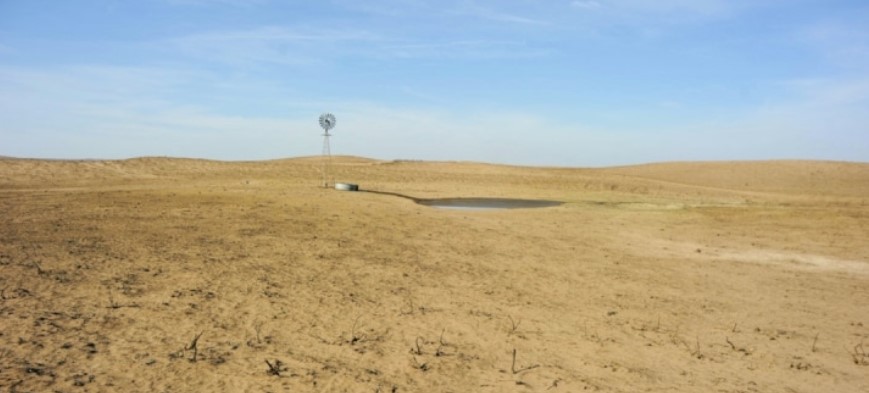
Agricultural News
Carl Josefy Gives Overview of FSA Programs to Aid Ag Producers During Drought
Wed, 01 Jun 2022 13:58:11 CDT
 Farm Director, KC Sheperd, talks with Carl Josefy about all things FSA-related. Josefy explains various FSA programs available to producers and contradicts the misconception that these programs are only available to a small number of operations.
Farm Director, KC Sheperd, talks with Carl Josefy about all things FSA-related. Josefy explains various FSA programs available to producers and contradicts the misconception that these programs are only available to a small number of operations.
"It is always a pleasure to be able to get in front of producers to let them know what is occurring with the Farm Service Agency," Josefy said. "We have a lot of programs going on, and it does overlap."
The newly announced Emergency Relief Program, Josefy said, is aimed at aiding commodity and special crop producers. This program, he added, includes10 billion dollars in assistance to agricultural producers that were impacted by wildfire, drought, hurricane, winter storms, and other eligible disasters that occurred across the country during the calendar year of 2021.
"Interestingly, some producers that have a 2022 wheat crop or other small grains that were planted in the fall of 2021 will also be eligible if they had eligible disasters that were filed and were related to a disaster condition that occurred in the calendar year of 2021," Josefy said.
Josefy said there are two phases of the Emergency Relief Program. Phase one, he said, will cover losses that were accounted for through the federal crop insurance or the non-insured crop disaster systems program offered for non-insurable crops.
"We are going to use the data that was calculated under both of those programs, or either program, for losses that occurred in 2020 or 2021," Josefy said.
In this two-phase approach, Josefy said the information will come straight from crop insurance in most cases. This approach, he added, enables FSA and USDA to streamline the application process and give producers an easier time during the application process.
One thing that each producer that signs up for ERP must know, Josefy said, is they must mark on the application whether they will provide and purchase a crop insurance or a NAP policy for the next two available crop years.
Josefy said they hope to have phase one completed in the next 60 days, so producers should complete their applications as soon as possible.
"It is very possible that we can do that because the application was mailed directly to the participants," Josefy said. "That means the person that purchased a crop insurance application and received an indemnity, or the person or entity that received a NAP payment had a NAP application for coverage."
Currently, Josefy said there is not an application submission deadline, but the payments must be issued by December 31st of 2023.
"That may not be the deadline for the applications," Josefy said, "but I think the funding money must be issued and paid by December 31, 2023.
For producers who believe they had a crop insurance loss or a NAP loss that was payable, Josefy said those individuals can check with FSA if they do not receive an application in the mail within the next two weeks.
"I would say you could go to your local FSA office and ask for a copy of your application," Josefy said. "If FSA cannot provide you with one, that likely means under phase one, we can not find or determine any losses occurred toward your program for your ID number."
Eligible crops under phase one will include crops that are mechanically harvested, or hand-picked, Josefy said, so grazing crops will not be eligible for this program. The only exception to this, he added might be if a producer had pasture, rangeland, and forage coverage.
Josefy also talked about the livestock forage program, which aids producers who have faced forage and grazing loss.
"The livestock forage program is applicable when a specific county has entered into a D2 category on the U.S. drought monitor for eight consecutive weeks, or a D3 or D4 at any time," Josefy said. "It could be for any type of grazing forage that was in place at the time the county triggered for eligibility."
If the producer had eligible livestock grazing on eligible pasture at the time the county entered into an eligible category on the U.S. drought monitor, Josefy said the producer can apply for payment on the livestock and the acreage that they had.
Click the LISTEN BAR below to hear more from Carl Josefy as he gives clarity on FSA programs and encourages producers to apply and to say informed.
WebReadyTM Powered by WireReady® NSI
Top Agricultural News
More Headlines...




